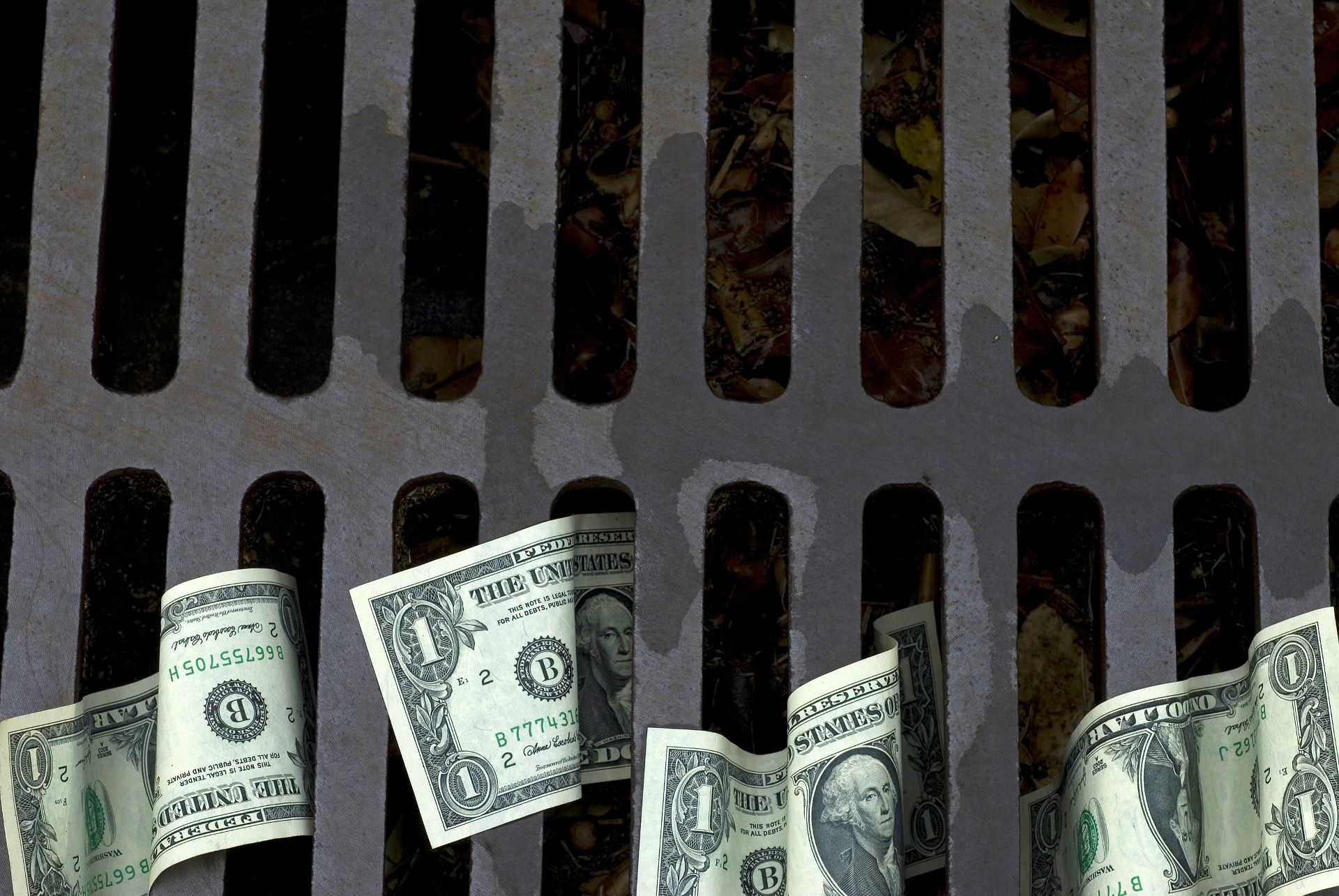Global Trade War Heroes, Villains & Victims: What five months of U.S. media teach us about Tech & Pharma reputations in 2025

In an era where geopolitics shapes market momentum as much as innovation does, corporate reputation has become a strategic asset, and a potential liability. This article is the first in a series that will unpack the Global Trade War - its villains, victims, and heroes across a wide range of actors and sectors, unlocking deep, actionable insight.
Welcome to the PharosGraph Trade War Theatre, where actors and actions are scrutinized, weighing their merit in the great reputation balance sheet for strategists, communicators, and decision-makers.
As global trade tensions escalate, tech and pharma giants are increasingly framed not just as companies, but as symbols of national interest or foreign threat. The latest PharosGraph analysis of U.S. media coverage from early 2025 reveals how quickly firms like NVIDIA, Eli Lilly, Alphabet, and Tesla shift between hero, villain, and victim roles, mirroring the volatility of a global economy fractured by trade wars, regulation-first diplomacy, and shifting alliances.
Reputation, once a matter of brand loyalty, now operates on a geopolitical stage.
A single news cycle can flip a household name from hero to villain overnight. In 2025 coverage so far, chip-maker NVIDIA and obesity-drug pioneer Eli Lilly have worn the hero’s cape, while Alphabet and Pfizer have been cast as villains under antitrust and drug-pricing spotlights. Then there’s Tesla, whose status pivots almost daily, one headline lauds robotaxis, the next condemns Autopilot crashes or critiques CEO Elon Musk, whose personal controversies often splash back onto the brand.
Those framing choices matter because they colour how consumers feel, how regulators posture and how investors price risk.
That’s where PharosGraph comes in. Every day the platform ingests thousands of U.S. news stories from more than ten thousand outlets, tagging each company mention based on the moral framing of its trade-related role:
- Hero: Defender of others, protects workers, promotes fairness, or takes positive leadership.
- Villain: Causer of harm, acts greedily, escalates conflict, or exploits others.
- Victim: Suffer of unfair consequences, harmed by others’ actions.
While the raw data are captured daily, we’ve rolled them into monthly snapshots for the analysis that follows. PharosGraph currently tracks scores of companies across Tech, Pharma, and other industries, but this post spotlights the brands that dominated U.S. coverage from January through May 2025.
We’ll view them through three lenses:
- Consistent heroes – brands that kept a positive profile across months.
- Consistent villains – companies stuck in negative framing despite their best PR.
- Narrative shifters – firms that ping-pong between praise and backlash.
Overlaying the victim perspective reveals hidden pressure points,because a spike in “under-siege” coverage often foreshadows a perception swing. By the end, you’ll see how reputation momentum builds, stalls and reverses, and how PharosGraph’s real-time radar helps communications, risk, and investor-relations teams stay one headline ahead.
Tech: Three Reputation Archetypes – Trade Exposure as a Wildcard
Consistent Heroes
NVIDIA, Microsoft, and Apple stayed in positive territory throughout early 2025. AI-chip demand, generative-AI rollouts, and iPhone/Services buzz dominated coverage. Even regulatory probes (Microsoft’s DOJ cloud investigation, Apple’s antitrust rumours) were outweighed by innovation story lines.
Consistent Villains
Alphabet, Amazon, and Meta stayed on the defensive. Alphabet wrestled with antitrust bills; Amazon’s union drama, and Meta’s privacy issues anchored them in negative territory. Interestingly, leaders from all three companies flanked Trump at his second inauguration while leadership from the three Consistent Heroes companies were absent.
Narrative Shifters
Tesla’s media mood swings are well known, but behind the robotaxi hype and Autopilot lawsuits lies a deeper trade-linked fragility. With gigafactories and rare earth sourcing tied closely to China, Tesla is unusually sensitive to export restrictions and geopolitical noise, an exposure that amplifies its reputation volatility.
NVIDIA stands out as a reputation hero in U.S. media due to its AI dominance, but globally, it's a symbol of tech nationalism. Export controls on advanced chips have not only affected NVIDIA’s supply chains but has also drawn the company into geopolitical debates. Some international headlines now frame it as a victim of U.S.–China trade escalation, showing how even “hero” brands at home can face hostile narratives abroad.
Victim cues
Tesla and AMD both posted "under-siege" spikes (regulatory probes for Tesla; supply fears for AMD) a cycle before perception swung. In Tech, a rising victim bar is rarely the end of the story, it’s a sign the next round of headlines will decide whether sympathy turns to blame or admiration.
Pharma: Same Industry, Opposite Trajectories, With Trade Tensions in Play
Consistent Heroes
Eli Lilly maintained glowing coverage thanks to its weight-loss breakthroughs and supply optimism. Its U.S.-centric manufacturing base insulated it from some of the global regulatory noise hitting peers abroad.
Consistent Villains
Pfizer stayed under fire in headlines cantered on COVID windfalls and U.S.drug-pricing hearings. However, part of the perception drag also traces back to international trade scrutiny, as U.S. pharma giants face louder backlash in export markets over access and affordability.
Narrative Shifters
Novo Nordisk began the year as a media darling on the back of Ozempic's success but saw perception swing by spring. One often-overlooked factor: European media flagged the company as a potential trade war casualty, caught between U.S.pricing demands and EU pharma trade protections. Headlines painted the firm as a victim of regulatory crossfire, which soon gave way to criticism as shortages and pricing tensions escalated.
Victim cues
Drug-pricing subpoenas and Senate hearings often start with a victim frame (“companies under investigation”) that flips to villain once findings go public. Novo Nordisk’s January victim spike coincided with European concerns over U.S. drug price mandates.
Cross-Sector Patterns
- The AI Halo: Mentions of AI lifted NVIDIA, AMD, Microsoft, even Oracle, while sparking disinformation and safety concerns that deepened Meta's villainy.
- Regulatory Heat: Antitrust (Tech) and drug-pricing (Pharma) hearings remain the most reliable villain-makers.
- Leadership Spotlight: CEO behaviour can super-charge swings. Elon Musk's political spats inflate both Tesla's victim counts (sympathy stories) and its villain angles (reckless-leadership narratives).
- Trade Tensions as an X-Factor: Companies like Micron are increasingly discussed through a national security lens. Their roles in global supply chains, especially in defence and chip manufacturing, make them likely candidates for victim framing amid geopolitical scrutiny.
- Top Trade-Linked Mentions: According to PharosGraph data, NVIDIA, Apple, and Tesla have some the highest trade-related media mentions, often flagged in victim roles. Apple stands out with over 2,000 victim-framed justifications linked to tariffs and supply-chain dependencies. Tesla and NVIDIA also feature prominently, with trade restrictions and explore controls frequently cited in their reputational narratives.
- Volatility Premium: Brands with big hero-to-villain swings show equally shape share-price moves; perception changes can be a leading indicator of narrative risk.
Turning Insight into Action
- Watch the Victim Gauge: A sudden rise often signals a brewing inflection point.
- Diagnose the Driver: Is the pressure legal, political or CEO-centric? Each demands a different comms play.
- Benchmark Continuously: Track your hero/villain delta against competitors, not just against yourself.
- Pre-empt the Flip: Transparent data drops, rapid-response briefings or CEO message pivots during a victim spike can stop sympathy from hardening into blame.
Final Takeaway – In a Trade War Era, Reputation Is Global
A company’s media framing is no longer just a function of earnings or innovation. As trade wars reshape global supply chains, reputation becomes a proxy for geopolitical alignment. PharosGraph helps decode this new reality; mapping how global policy moves shape public perception, investor narratives,and regulatory risk in real time.
Curious how your brand stacks up, or how a sudden spike in “victim”framing could evolve? Stay tuned; there’s more to come from the Global Trade War Theatre stage, where we’ll continue to unpack emerging narratives and reputational power plays across industries. Want to know more: Contact us today






